Julia Lohmann
I admit that it took me several encounters with Julia's work to become intrigued. Normally, I wouldn't use the word 'disgust' to speak of someone's work, but well... That's what I felt when I saw her Ruminant Bloom (lamp, pictured below) made of a cow's preserved second stomach and imagined what it must be like to touch! Luckily, her Cow Benches don't evoke the same reaction. They are indeed intriguing, and have won her a spot in the very well edited Galerie Kreo in Paris. I'm still trying to decide how I'd feel sitting on one!
Birthplace: Hildesheim, Germany
Studies/year of graduation: Royal College of Art, Design Products, 2004
Profession/how long you've been there: I've been involved in design since my A-levels in 1996. I went freelance after my graduation at the RCA.
Left handed or Right handed: Both- I write with my right and draw with my left. It's great for drawing elaborate pictures because you can swap hands every few hours but during math class in school it was always a nuisance as I wrote the numbers with my right and underlined the calculations with my left…
Favorite dessert: All desserts, but especially ice cream and my friend Michael's home-baked chocolate cookies
Sketch something you remember from your childhood
On holidays my dad and I were scavenging the beach for flotsam to make sculptures. I was more interested in collecting and imagining than building. My mum was most interested in limiting the number of items that were taken home without offending dad or me. We had a great time!
Object/Icon you wish you had designed and why?
-Christiania Bicycle- I love the sustainable way of life it facilitates and promotes
-One of Thomas Heatherwick's sculptures- I think his work is ingenious
The aspect of your work you never tire of?
Looking at nature
One color/pattern we'll never see in your design portfolio.
Not a colour or pattern- but I try to create work with a long life span and a responsible use of resources.
You'll know you've made it when…
…you're free to do whatever you like and still don't become self indulgent or repeat yourself.
Julia's cow-benches, memento mori to the cows who died to give their leather to humans, explore the threshold between animal and material, were the first of her portfolio to which I was introduced. Each is handsculpted and unique, with no improvements or embellishments made to the cow's hide. The wrinkles and scars of her life are carried on in this functional bench which They are sculpted in different poses, and each has a name. [Alma Home in London provided generous support to Julia to help her realize this project.] Here they are on the lawn:
And here is Anoushka in the city [Tokyo, to be exact!]
The Ruminant Bloom still evokes a strong initial reaction, but I can see the beauty in the natural pattern around the lamp and how it glows. Made of preserved cows and sheep-stomachs. I am glad to know that my two-tiered reaction, even if in the wrong order, falls within the norm, according to Julia!!
Flock - an installation of fifty sheep stomachs as part of the Royal College of Art Summer Show (2004). Exhibited also at Design Mart at the Design Museum.



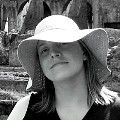




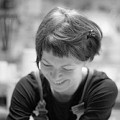



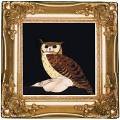

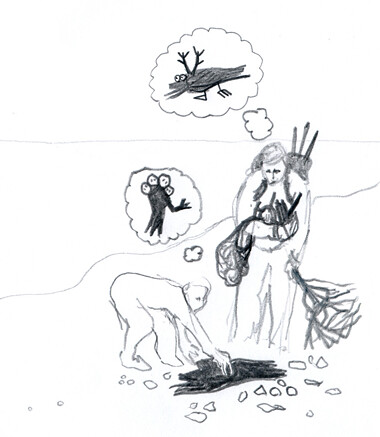
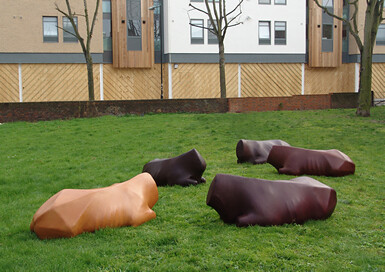
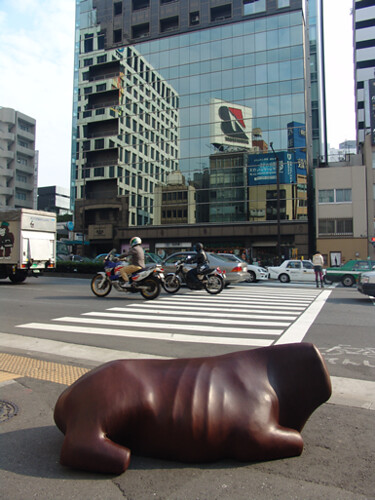
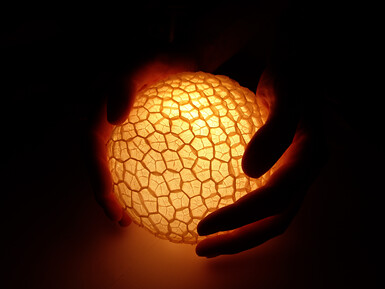
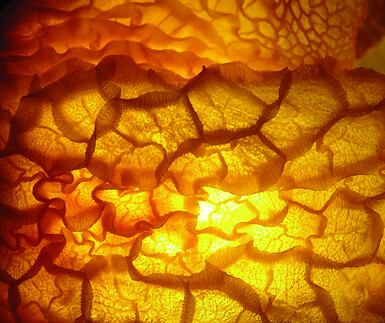
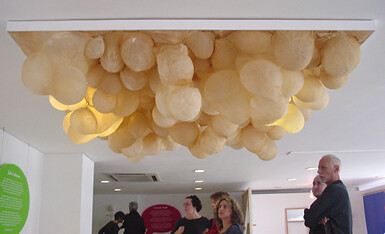





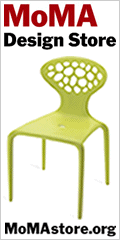

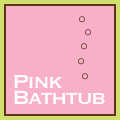

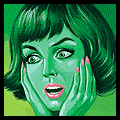
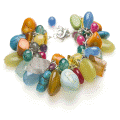


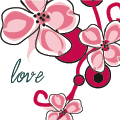
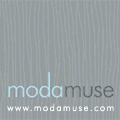

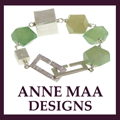
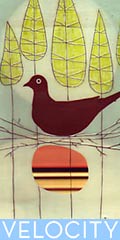

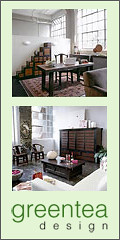







6 Comments:
although visually quite beautiful those cow benches, in my own mind, are really sick and twisted and make me feel really disgusted. i realize that they are supposed to make some sort of statement about the relationship of humans using animals as materials but i guess i feel like all it is doing is perpetuating the notion that it is totally fine for humans to dominate other species and use them as we please. i wish we lived in a gentler world.
I find the couches really interesting but at the same time, contradictory. Or are they only interesting because of the contradiction?
In the making of the memento mori to the cows, Julia Lohmann has had to incorporate materials derived from the destruction of further cows. Unfortunately the artist's statement on her website is non-commitally vague.
I am more interested in the work 'Flock' incorporating the stomachs of the cows. I like the idea of using a material that might otherwise have been discarded during the meat production process.
However, I do get a whiff of the 'shock value as marketing tool' aroma.
p.s. I am not a vegetarian!
I think it is wonderful that you have shared this artists work - (in your stunnng frank manner)It is a little bit of all of what has been said the above, yet gives the viewer a contemporary take (yes, our gentler world is gone) on an age old theme. Thank you!
Hi Susan-- I would have never used the word 'disgust' to describe the ruminant bloom if Julia had not included this statement on her website, which maybe I should have included in my post to make it very clear!! Julia is an extremely nice person, and I wouldn't want my post to be misconstrued as negative in her regard.
Julia's description of Ruminant Bloom:
"Flowerlike lights made of preserved cow and sheep-stomachs
This series of lights triggers feelings oscillating between attraction and disgust, the former through their warm luminosity and the latter as soon as one learns more about their material origins. The honey-combed texture of the second stomach (every cow has four) envelopes the lights in a beautiful, billowing lace."
Kristina
I keep moving closer to being a vegetarian and these photos pushed me one more step towards that. These seems like something from a sick serial killer flick.
Dear Hanna, Susan and Annadee,
I don’t think the world has ever been more gentle than today, but it surely has been more honest. People have used, killed, and eaten animals since the beginning of humanity, but the way in which the consumer is relieved of his/her responsibility and disconnected from the animals life and subsequent slaughter is reasonably new. Chicken is sold as dinosaur-shaped nuggets, leather gets carefully selected as to eliminate every trace and scar from the animals life.
I believe this disconnection is partially responsible for factory farming and the mass-production and consummation of increasingly cheap animal products.
With the cowbenches and the ruminant bloom lamps I am trying to bridge the growing divide between the animals we breed and the products we make from them.
I agree, it is difficult, nowadays, to be an ethical consumer. Maybe it helps to be vegetarian- but then how about all the animals losing their habitat through the use of pesticides and fertilizers?
Maybe it helps to calculate the energy used in the production and transport of food and it’s calorific ‘benefit’ to the consumer (most meat products would not fare too well here, but neither would salad, flown 10 000 miles around the globe).
Here you can find a very good article Josh Sims wrote for the Independent about my work:
http://news.independent.co.uk/uk/this_britain/article1640473.ece
He explains, better than I ever could, the background for my work.
Extract from Independent article:
“Are there dead animals in your home?
Do you think that because you don't wear leather and don't eat meat, you avoid animal products? Think again; animal by-products are everywhere. Here's a tiny sample.
Brushes Animal hair can be used in paint, bath and shaving brushes, and even in toothbrushes.
Cheese Many cheeses use rennet, an enzyme taken from the stomachs of slaughtered calves and used as a coagulation agent.
Confectionery The shiny glaze on many sweets and lollies is achieved by using a glazing agent called shellac, obtained from a resin produced by the lac insect.
Cosmetics These contain many animal products. Crushed fish-scales, for example, can be used to create a shimmering effect.
Drugs Capsules used to dispense medicines are now often made of plastic, but some are still made of gelatin, an emulsifying agent made by boiling animal tissues.
Food colourings Cochineal is a common reddish colouring in food products ("colour 120" on the label). It is made from the dried scales of female insects.
Explosives Fireworks often use glycerine, an oily liquid, in their production. It is often derived from animal fats.
Fragrances Real musk (as opposed to the synthesised variety) is extracted from the genitals of musk deer, musk rats, beavers and civet by what campaigners say is a cruel, painful process.
Wines and beers Most use isinglass, a fining agent derived from the swim bladders of some fish. “
It’s not such a black and white world….
Julia
Post a Comment
<< Home